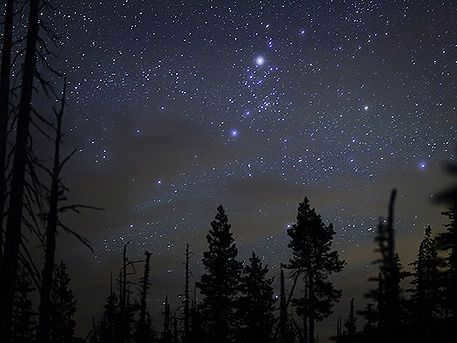For the brilliant minds in the field of astronomy who value accuracy, the question arises: Which planet is the closest to the Sun? While this may not come as a shock, those who are less interested in the subject might easily forget the answer. Nevertheless, I am here to enlighten you on the matter of the planet that lies closest to our fiery star. By doing so, we can gain a better understanding of one of the many wonders that captivate the minds of people.
Now you will witness the planet that is nearest to the Sun.
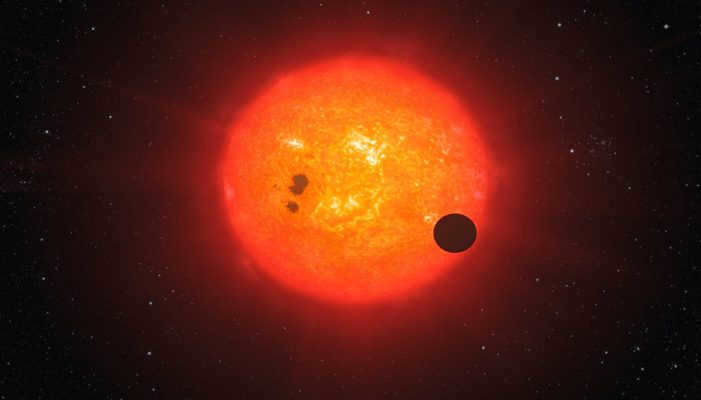
The planet that is closest to the Sun is Mercury. It is composed of similar elements as Earth, and some even say that if it weren’t for its proximity to the Sun and the extreme temperatures, it could be a habitable planet for humans.
In the past, it was discovered that Mercury had an atmosphere similar to Earth’s, but over time it dissipated due to the high temperatures it experiences.
On this particular Planet, the existence of life is highly unlikely due to the extreme temperatures. However, if there is life, it is speculated that it would have to be underground, as the planet’s surface shows no signs of water or any other sources that could support life. In order for humans to survive in such conditions, we would need to wear extremely durable suits to withstand the heat.
You might also find these articles interesting: CHARACTERISTICS OF THE 3 FASCINATING GAS PLANETS IN OUR SOLAR SYSTEM
4 unexpected characteristics of the nearest planet to the Sun
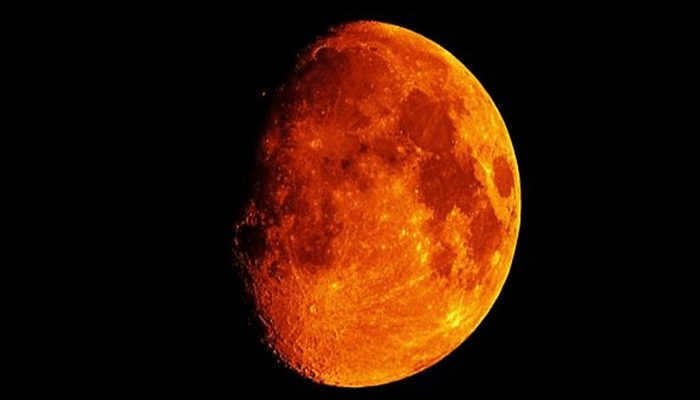
There are several features that can be attributed to mercury:
1. Gravitational Force
The gravitational force of this planet is significantly weaker compared to Earth’s, so if someone were to land on it and jump off, they would be able to float easily in space due to the planet’s low gravity.
2 years
The planet Mercury has a year that lasts only 88 days for us. This means that every 88 days on Earth, Mercury completes a full orbit around the sun. Another interesting fact is that Mercury’s rotation on its axis takes 59 days, so in just 88 days on Mercury, only one day and a little more has passed, even though it has completed a full orbit around the sun.
3. The Etymology of its Name
The Greeks supposedly named the planet Mercury after the god of travel and commerce, who was often referred to as Mercury. They believed that this god was swift in his movements across the world. Because Mercury is the closest planet to the sun and is therefore bathed in its intense light, the Greeks decided to name it after this nimble deity.

Even though Mercury is the planet closest to the Sun, it is not the hottest planet in the solar system. This may sound surprising, but it is true. In fact, Venus is the hottest planet in the solar system. The reason for this is its intense greenhouse effect, which allows it to accumulate an immense amount of heat from the Sun. As a result, the temperature on Venus is extremely high and would be intolerable for any living being.
Recent discoveries
The planets’ distance from the sun is measured in astronomical units (a.u.) during two unequal points in their orbit: perihelion and aphelion. Perihelion represents the planet’s closest point to the sun, while aphelion represents its farthest point.
In order to determine the distance between the planets, we need to momentarily assume that they are celestial bodies and that they all share the same orbital period.
This text is clearly not punctuated at all: the planets are not in alignment, and their orbits are not all similar to one another. However, in this article, we will first focus on identifying the planet that is nearest to the Sun. Through our research, we have determined that this planet is Mercury. Furthermore, we have found that the distance between Mercury and the Sun at perihelion is 46 million kilometers (0.31 a.u.).
In another sense, many individuals have already observed that Mercury is the planet closest to the Sun. However, as a result of this research, we believe that being the closest to the Sun does not necessarily mean that Mercury is the hottest planet. In this case, we may be making a fallacy. Let us examine the evidence:
The nearest planet, but not the most scorching planet
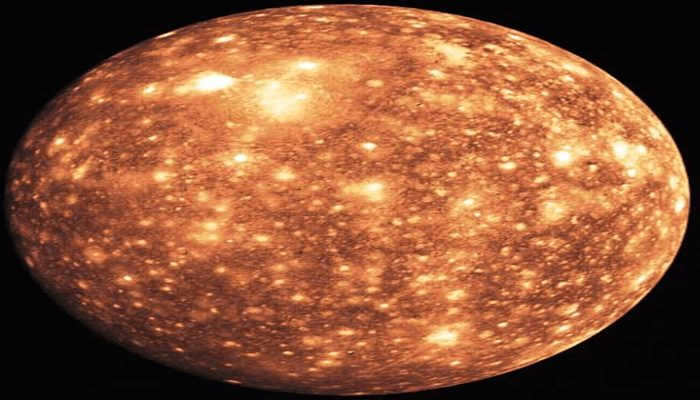
In the magnificent depiction of the celestial system, the most prominent energy source with a discrepancy is none other than the Sun. And typically, we assume that Mercury, being the planet closest to the Sun, is the hottest planet in the solar system. However, this is not the case, and this distinction should be bestowed upon another celestial body.
Mercury is indeed scorching hot and completes a full orbit around the Sun in a mere 88 days, reaching a temperature that stands at an astounding 400°C in its hottest region.
However, due to its sluggish rotation, Mercury retains dark regions where sunlight does not reach for extended periods of time, resulting in temperatures plummeting below -100°C in those areas.
From a different perspective, Mercury is composed of practically identical substances as Earth. Some even argue that if it weren’t for the sun’s trajectory and extremely high temperatures, it could potentially be a habitable planet for humans.
In earlier times, it has been discovered that Mercury possessed an atmosphere comparable to Earth’s, but over time it dissipated until it became impractical, due to the same persistent temperature rise it experiences.
On this Planet, the existence of life is highly unlikely due to the extreme temperatures. However, if life does exist, it is believed to be underground since the planet’s surface shows no signs of water or any other source necessary for sustaining life. Without proper protection, humans would need to wear highly durable suits to withstand the intense heat.
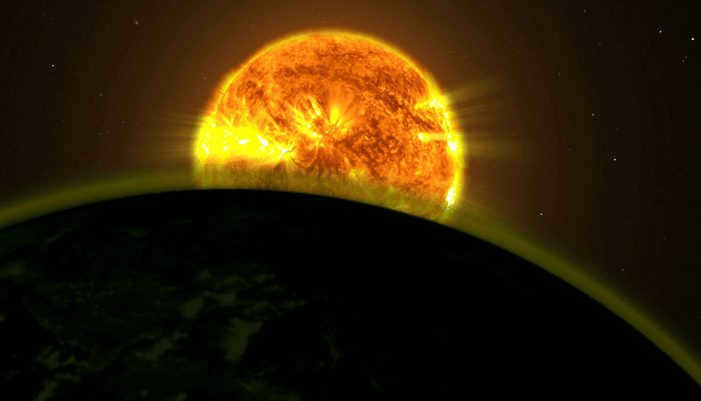
Researchers emphasize that the reason behind the “nearly” in Newton’s theory was the planet Mercury, which is the nearest planet to the Sun. The equation formulated by Newton to determine Mercury’s path around the Sun and its apparent position in the sky as observed from Earth were cross-examined, and the results showed that they were quite similar. However, there was a minor inconsistency in the actual position of Mercury, leading to a yearly variation in its location.
Remember that Mercury is not only attracted to the Sun, but also to the other planets (Venus and Earth are nearby, but most importantly, Jupiter and Saturn, the massive planets, etc.). The disparity (0.43″/yr) between the estimated value for Mercury and the current one was smaller, but it was present. It was a minor yet concerning mistake: why precisely did Newton’s theory work for Mercury when it appeared to work for all the other planets?
At the start of the previous century, Einstein was the one who brought up the issue of the incongruity of Newton’s theory and eventually managed to demonstrate the famous 0.43″/year in relation to Mercury. However, what prompted Einstein to investigate Newton’s theory of gravitation was a perception (of an instantaneous exercise in distance), not a different expectation regarding Mercury.
An intriguing matter in the cosmos that leaves us with queries about which planet is the nearest to the sun.
The content of this article aligns with our principles of editorial ethics. To report an error, click here.
Full article path: postpost “Solar System” Identifying cases about which planet is closest to the Sun

Overview of the planets in the Solar System
Our solar system consists of a total of nine planets, each with its own unique astronomical and structural characteristics. Just like Earth, these planets not only rotate on their own axis but also orbit around a central celestial body. The four planets closest to the Sun – Mercury, Venus, Earth, and Mars – are often referred to as the “terrestrial group planets.” These planets share common features such as relatively small size, a composition dominated by solid elements, the absence of rings, and a limited number of satellites. Following them are the planets of the Jupiter group, which include Jupiter itself, as well as Saturn, Uranus, and Neptune. These planets are characterized by dense atmospheres and have lighter components surrounding their cores. They also possess rings made up of fragmented substances and are accompanied by numerous satellites. As for Pluto, it resides in perpetual darkness and is not universally recognized as a planet by some scientists.
Mercury
It is common knowledge that Mercury is the closest planet to the Sun. In terms of size, it is the eighth largest planet in our solar system. Interestingly, the moons of Saturn and Jupiter, Titan and Ganymede respectively, are larger in size. Mercury has a diameter of 4880 kilometers and its orbit is located about 58 million kilometers away from the Sun. Throughout history, only one spacecraft, Mariner 10, has ever visited Mercury between 1974 and 1975, providing us with information about only 45 percent of its surface. Scientific research indicates that the temperature on Mercury varies from 90 to 700 degrees Kelvin.
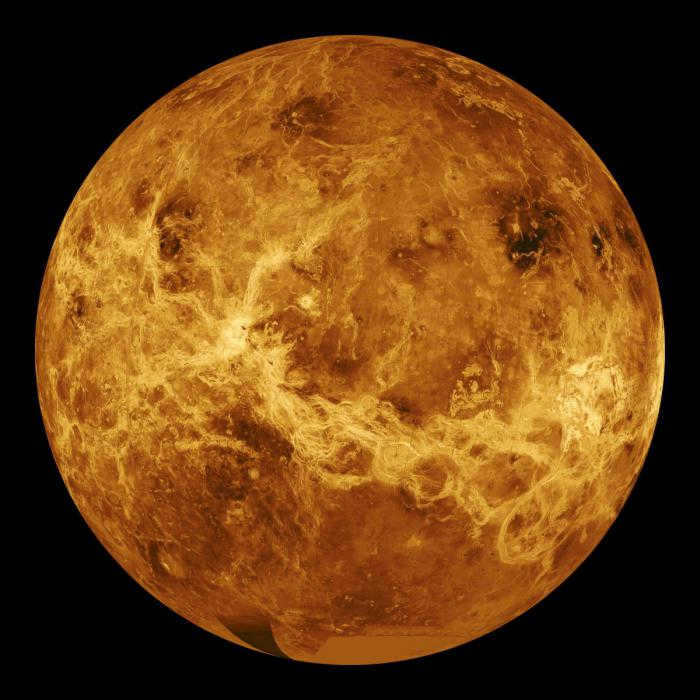
Mercury, the planet closest to the Sun, bears some resemblance to the Moon. It lacks tectonic plates and is covered in numerous craters and vast chasms. In terms of density, Mercury ranks second in the solar system, behind only Earth. Unlike Earth, however, Mercury has a weak magnetic field, which is around a hundred times less powerful. Another distinguishing feature of Mercury is its lack of any natural satellites, making it visible to the naked eye.
Venus, the second planet in terms of its distance from the Sun, ranks sixth when considering its magnitude. With a diameter of over 12,000 kilometers, it orbits 108 million kilometers away from the Sun. The Mariner 2 spacecraft was the first to come close to Venus in 1962.

Our Home Planet – Earth
Earth, the third planet from the Sun, is a fascinating celestial body. With a diameter of 12,756.3 km, it orbits at a distance of 149.6 million km from the Sun. Just like its neighboring planets, Earth has a history that spans approximately 5.5 billion years. Among all the celestial bodies in our solar system, Earth is known for being the densest.
One of the most intriguing aspects of Earth is the abundance of water that covers 71% of its surface. Unlike any other known planet, Earth is unique in that it has liquid water. This is thought to play a significant role in maintaining a stable temperature on our planet. Without this liquid water, life as we know it would not be possible.
In addition to its natural beauty, Earth also has a natural satellite – the Moon. The Moon has captivated humans for centuries and continues to be a source of fascination and exploration. In addition to the Moon, humans have sent numerous artificial satellites into orbit around Earth, further expanding our knowledge and understanding of the universe.
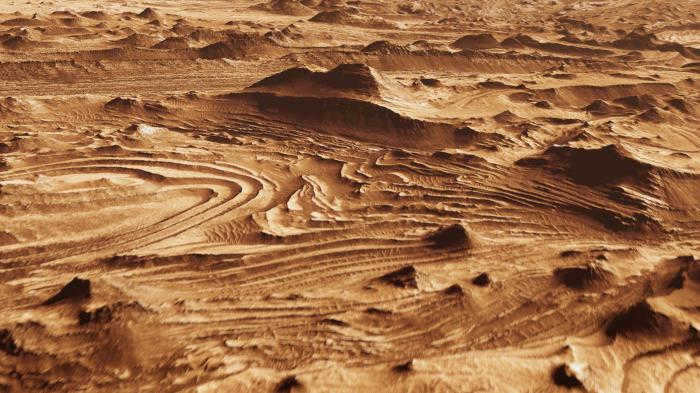

The Red Planet
Mars, known as the Red Planet, is situated fourth in terms of distance from the Sun and seventh in terms of size. Its orbit is approximately 228 million kilometers away from the Sun, and it has a diameter of 6794 km. The first spacecraft to successfully reach Mars was the Mariner 4 in 1965. Similar to other planets close to the Sun, Mars possesses a distinctive and fascinating landscape. It features numerous craters, mountain ranges, plains, and hills. The average temperature on Mars is around minus 55 degrees Celsius. It can be observed with the naked eye. In terms of satellites, Mars has two: Deimos and Phobos, which orbit near its surface.
Observing Mercury from Earth without the aid of a telescope can be challenging. As the nearest planet to the Sun, it is only visible to Earth observers during the early morning and evening twilight, when it is farthest from the star in its orbit. During the daytime, the bright glow of the Sun’s disk prevents us from seeing this object.
The arrangement of the planets in the solar system
The planets refer to celestial objects that are large enough to take on a spherical shape as they form, but do not have enough mass to initiate nuclear fusion and become a star.
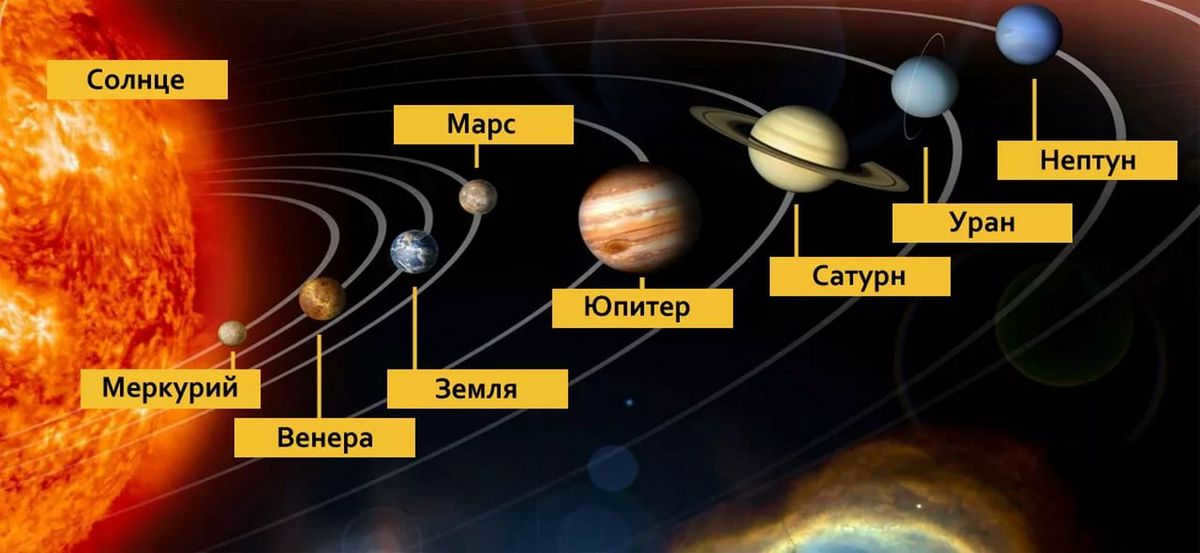
Our system contains 8 celestial bodies, arranged in the following sequence (starting from the outermost and moving towards the star):
- Neptune;
- Uranus;
- Saturn;
- Jupiter;
- Mars;
- Earth;
- Venus;
- Mercury.
Mnemonic devices can assist in remembering their correct order:
- “The planets are not difficult for the youngest child to memorize, knowing Venus, Mercury.”
- “One can traverse beyond Mars by skillfully navigating our Planet.”
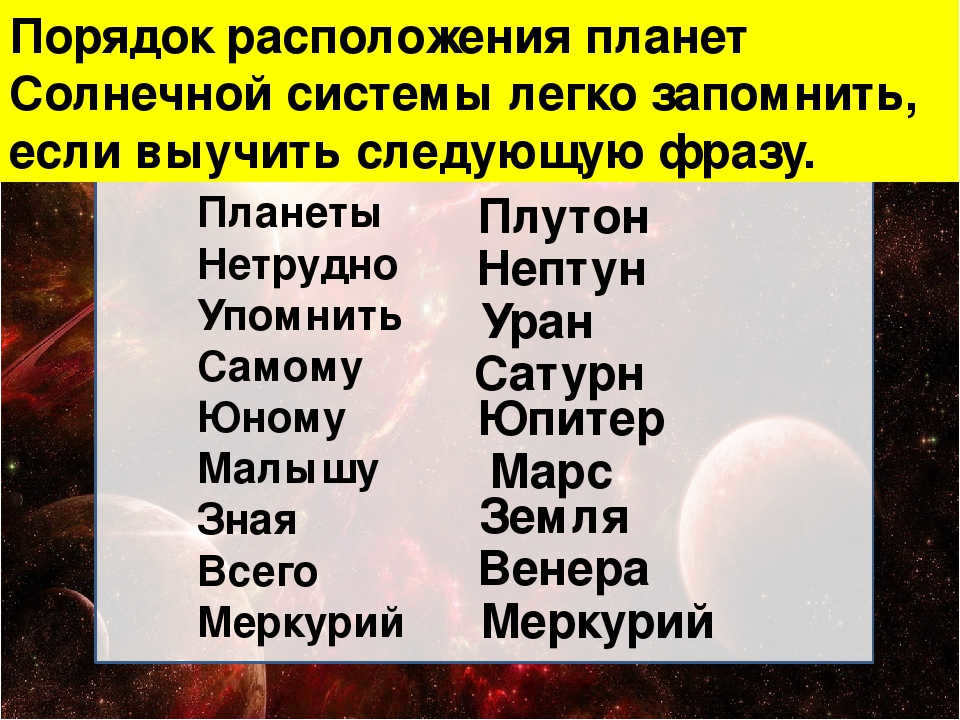
The names of planetary objects are denoted by the first letters of words in them: in the first case – towards the Sun, in the second – away from it. These rules were created during the mid-20th century, when Pluto was added to the list of planets in the Solar System, but later removed in 2006.
All celestial bodies orbit on the same conventional plane called the ecliptic. They all revolve around our star in a counterclockwise direction (when viewed from the conventional North Pole of the world).
Planetary objects also rotate around their axis in the same direction. This is true for Venus and Uranus as well. Although it is believed that these two objects have opposite rotation directions, it is simply a traditional convention that arises from the specific inclination of these planets.
The Impact of the Sun on Mercury’s Atmosphere
The close proximity of Mercury to the Sun has resulted in the absence of an atmosphere on the planet. It is believed that the powerful solar wind streams have effectively stripped away the air layers surrounding Mercury.
The Sun’s proximity to Mercury also accounts for the extreme temperature variations experienced on the planet throughout the year. Due to the slight inclination of its axis of rotation in relation to its orbital plane, there are no distinct seasons on Mercury (which has an 88-day year).
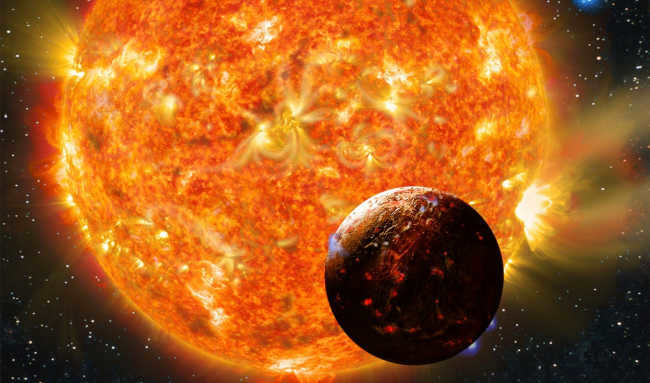
The temperature on the side of the planet facing the sun is extremely high, reaching +430℃. However, on the night side of Mercury (which takes 58 Earth days to complete one rotation), temperatures drop significantly to as low as -190℃. It is equally cold at the poles of Mercury.
Despite the extreme heat, it is believed that there may be ice caps present in the polar regions of the planet. This assumption is based on the discovery of depolarized areas on Mercury, ranging in size from 50 to 150 km. In these areas, radio waves behave differently when reflected compared to other areas.
According to astrophysicists, the occurrence is attributed to the existence of water ice. Water is brought to the surface of the celestial object through collisions with comets: some of it evaporates due to the intense heat, while the rest accumulates in deep craters at the polar regions, freezes, and remains there indefinitely.
The planet closest to Earth
Mercury orbits the Sun in an elongated elliptical path, moving away from the star at a distance of 69.8 million km, and then approaching it at a distance of 46 million km. However, it never goes beyond the orbit of Venus.
Venus is the planet in the Earth’s group that is nearest to Earth. The distance to this celestial body from us varies from 38 to 261 million kilometers at different times of the year. The average distance from Venus to the Sun is about 108 million kilometers. It revolves around the star in an almost circular orbit.
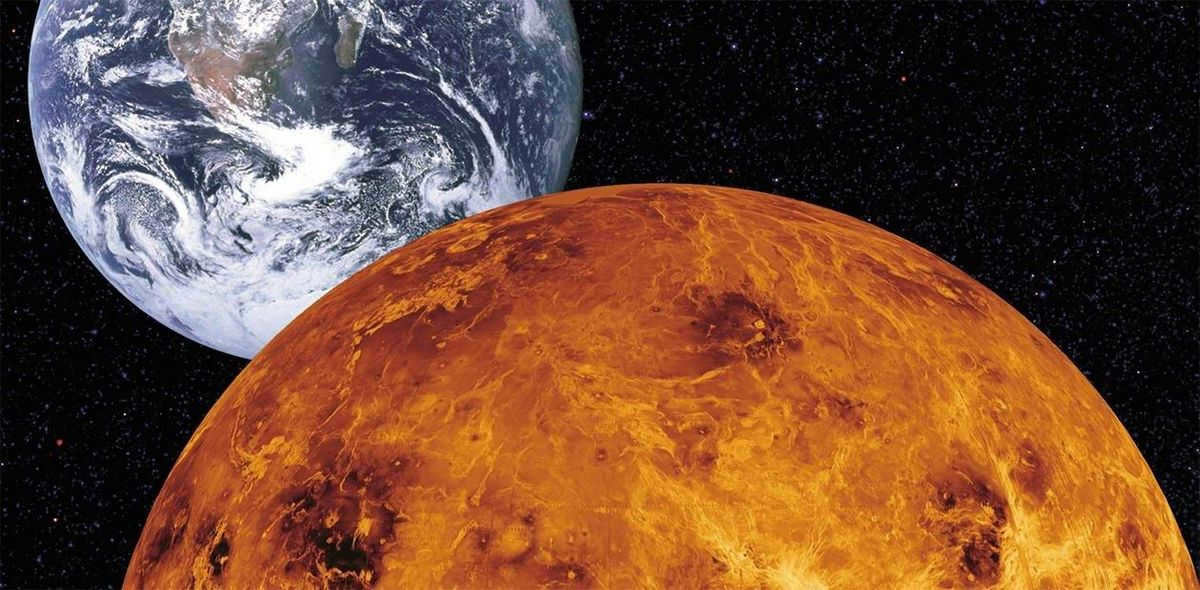
Solar planet #2 shares many similarities with our own:
- radius;
- mass;
- surface composition;
- average density of the planetary solid;
- free-fall acceleration;
- orbital path shape;
- first and second space velocities.
Because of these similarities, Venus is often referred to as “Earth’s sister”. However, there are also significant differences between these two objects. For instance, Venus lacks natural satellites and is not within the habitable zone of the Solar System. The extreme temperatures on Venus make the existence of liquid water impossible, rendering it unsuitable for life.
Hello there, esteemed readers of the KtoNaNovenkogo.ru blog. From a young age, we have been aware of the presence of celestial bodies such as the sun, moon, stars, and even other planets in the vast expanse of the sky.
However, what exactly is the sun? Is it classified as a planet or a star? Moreover, why does it have such a blinding effect on our eyes? Furthermore, have you ever wondered why it feels cooler in the shade as opposed to being on the sunlit side? Additionally, what are the precise measurements of its diameter and what is its unique structure like? Moreover, how old is this magnificent celestial entity, and where exactly does it rise and set within the grand scheme of things?
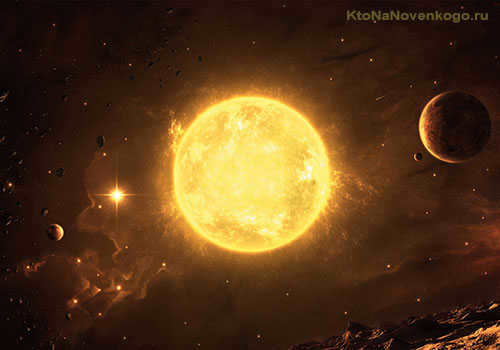
What is the closest planet to the sun?
The sun is not a planet, but rather a star. Stars are celestial bodies that emit light and are held in space by their own gravity and internal pressure.
All stars, including the sun, are made up of gas and undergo thermonuclear reactions. Whether we can see them with the naked eye or not, stars are present throughout the universe.
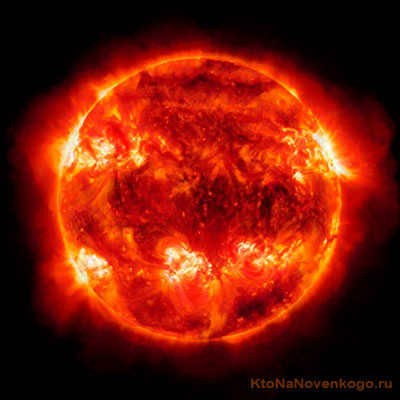
A star is a celestial body that is orbited by planets. It is possible for a star to have multiple planets orbiting around it.
Now, let’s consider the sun. According to the definition mentioned earlier, the sun belongs to the category of stars.

We perceive it as significantly larger than other stars because it is the nearest to our planet. Earth is a celestial body that orbits around the sun. This fact wasn’t evident just a few centuries ago, when expressing such a viewpoint could cost one’s life (as was exemplified by Giordano Bruno).
Stars exist in a variety (blue, white, red) of sizes and temperatures. They are categorized based on their hues:
- Red. They have surface temperatures ranging from 2,000-5,000 K.
- Yellow. Their temperatures range from 5,000-7,500 K.
- White. The surfaces of these stars are heated to temperatures of 7,500-30,000 K.
- Blue. Their surface temperature can reach up to 80,000 K.
This classification is not precise. There are also other blue-white, yellow-white, and orange stars that scientists recognize.
Our closest star, the sun, is classified as a yellow dwarf star. In comparison to other stars, it is relatively small in size and has an average surface temperature of approximately 6,000 K.
Diameter, mass, temperature, and distance from the sun
The sun is one of the many stars located in the Milky Way Galaxy. It plays a crucial role in sustaining life on Earth. It is situated about 149.6 million kilometers away from our planet, a distance commonly referred to as an astronomical unit..
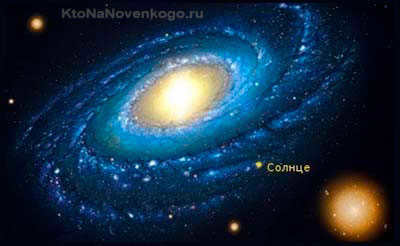
The size of the sun is 1,392,020 km in diameter, which is 109 times the size of our planet. The radius is half of this measurement.
The weight of the sun is 1.99*1030 kg. This is the unit used to measure the weight of other celestial bodies in astronomy, known as M☉.
It is incorrect to talk about the temperature of the sun as a specific value because it varies in different parts:
The core extends 173,000 km from the center of the star, which is approximately 20% of the sun’s radius.
The Sun’s Composition
The Sun, which is considered a relatively small star in the vast expanse of the cosmos, is composed of various chemical elements. The matter that makes up the Sun has the following chemical composition:
- Hydrogen (constituting 73% of its mass and 92% of its volume).
- Helium (making up 25% of its mass and 7% of its volume).
- Other elements, including neon, nickel, nitrogen, and more.
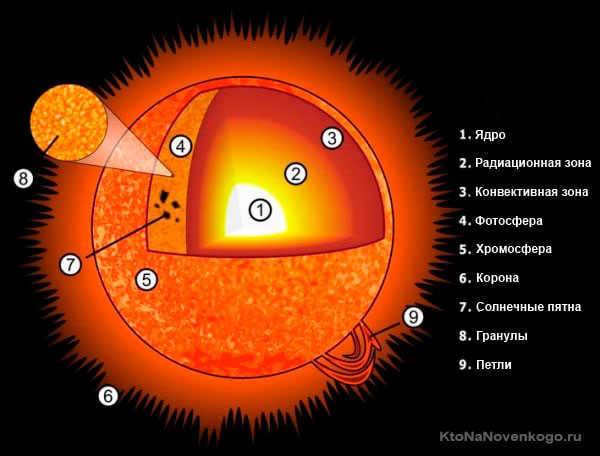
Beginning from the center, the Sun can be divided into numerous layers:
- The core. This is the region where hydrogen atoms undergo fusion to form helium nuclei. The density of the gas inside is higher than that of iron (yes, you read that right, it is 15 times greater than the density of lead). The resulting energy then has to traverse through several additional layers of the star. These thermonuclear processes do not take place in other parts of our star.
- The zone of convection. The Sun’s outer layer, where heated particles rise towards the surface over a span of several decades.
The photosphere constitutes the visible layer of the Sun. The chromosphere can only be observed during a total solar eclipse. The corona represents the outer atmospheric layers of this celestial body.
It takes approximately eight minutes for sunlight to reach Earth. Due to the Sun’s immense energy, looking directly at it without proper equipment can cause blindness.
What is the Sun’s Age?
When we consider the processes occurring in the Sun’s core, which take many years to generate the heat and light we experience, it’s natural to wonder: how old is the sun?
While it’s challenging to provide an exact answer to this question, it is widely accepted that the Sun formed approximately 4.5 billion years ago. How do we determine its age? The informative video below reveals the answer:
A star like our Sun has enough energy to last around 11 billion years, indicating that it is still only halfway through its lifespan (with approximately 5 billion years until it becomes a white dwarf).
Solar system – which planet is closest to the sun
Earth is just one of the 9 planets that orbit this star. Here is a list of the planets starting with the one nearest to the sun:
- Mercury. It orbits the Sun in 88 days. The temperature in its atmosphere can reach +380°C.
- Venus. It has a rotation period of 224 days and a temperature of +470 ° C.
- Earth. As you know, it completes a full orbit in 365 days (1 Earth year).
- Mars. It has a temperature of -130°C, is 1.5 astronomical units away from the Sun, and revolves around it in 1.88 years.
- Jupiter. It has a temperature of -145°C and a rotation period of 12 years.
- Saturn. Its temperature can reach -180°C, and the planet completes a full orbit in 30 years.
- Uranus. The rotation period of Uranus is 84 years.
- Neptune takes 165 years to complete one rotation around its axis.
- Pluto, which was once considered a planet but is no longer classified as such, has a revolution period of 248 years.
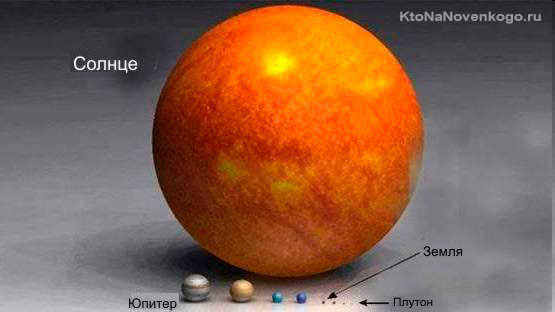
Jupiter is the largest planet in our solar system, while Mercury holds the title for being the smallest. It is fascinating to note that the Sun’s mass accounts for a staggering 99.86% of the entire solar system’s mass.
Interestingly, the answers to the questions of which planet has the highest temperature and which planet is closest to the sun are not the same. Mercury holds the title for being the closest planet to the sun, but it is actually Venus, the second planet, that boasts the highest temperature.
It is widely accepted that the east is the direction from which the sun rises and the west is the direction in which it sets.
In ancient times, there was a belief that it was the sun that revolved around the earth. However, this belief has been proven false. In reality, it is the earth that rotates on its axis, causing the sun to appear on one side or the other.
Humans observe the sun rising and setting, but these movements are actually due to the earth’s rotation. The sun itself remains stationary in comparison to the earth.
In essence, sunrise can be described as the moment when the sun becomes visible above the horizon.
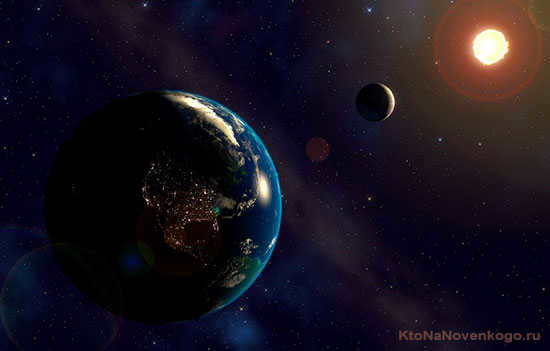
The Earth’s rotation is in a counterclockwise direction. Since our planet’s rotational motion remains constant, the locations where the Sun rises and sets remain unchanged over time.
However, in the hypothetical scenario of the Earth suddenly changing its rotational direction on its axis (which is scientifically impossible), the sun would indeed rise in the west and set in the east.
The Earth’s Size and Distance from the Sun
Not many people consider this, but in reality, the Earth is situated at an ideal distance and size in relation to its star. Why is this noteworthy?
- If the distance was reduced by 5%, life would be untenable due to the scorching temperatures.
- If the Earth were 1% farther away, it would be covered in thick sheets of ice.
- If the Earth were larger, hydrogen would accumulate in the atmosphere, rendering it uninhabitable over time.
- If the Earth were smaller, oxygen would deplete.
It is the Earth’s optimal size and distance from the Sun that make life possible on our planet.
Wishing you the best of luck! We hope to see you again soon on the pages of the KtoNaNovenkogo.ru blog.
This article is filed under the following headings:
Comments and reviews (5)
Typo: The diameter of the sun is 1,391,000 kilometers, which is almost twice the diameter of our planet. In the handbook, it states that the sun’s diameter is 109 times larger than our planet.
“Stars are celestial bodies that are shaped like spheres and emit light. They are held in space by their own gravity and internal pressure.
A planet is a celestial body that orbits a star. It is possible for there to be multiple planets orbiting a single star.”
There is a small inaccuracy. Stars can also orbit other stars, such as A and B Centauri.
Yellow dwarf, scientists do not underestimate our sun, as it provides us with the energy we need. Without the sun, there would be no life on Earth.
We have a limited understanding of the universe, including our own sun. Previously, it was thought that the sun orbited the Earth, rather than the other way around. Eventually, our current knowledge will be regarded similarly.
When reading this piece, it is impossible not to be in awe of the incredible star that provides warmth to our stunning planet. I was astounded by the core temperature of this colossal “inferno” – a staggering 15,000,000 degrees Celsius.
Let me share a fascinating study with you: “Experts have calculated that if a pinhead-sized piece of the solar core is placed on Earth, it would be impossible to get closer than 140 kilometers to this tiny ‘oven’! That’s an incredibly scorching temperature! Fortunately, only a minuscule fraction of the sun’s energy, one five hundred millionth to be precise, reaches our planet. Even these tiny ‘crumbs’ of energy are sufficient to sustain life on our remarkable planet.”
Therefore, the Sun serves as the ultimate ‘power plant’ that has been operating flawlessly for millions of years, supplying just the right amount of energy. Although there is still much more to discover about the sun, the knowledge we have gained from your article is already awe-inspiring to its creator!
Your comment or feedback
Earth scientists are fascinated by each planet in the solar system. The first planet, located 45.9 million kilometers away from the sun, is known as Mercury. Mercury is named after the god who watches over travelers, merchants, and thieves. Ancient Greek scientists gave this name to the planet because of its “restless temperament”: the closest planet to the sun completes one orbit in just 88 Earth days.
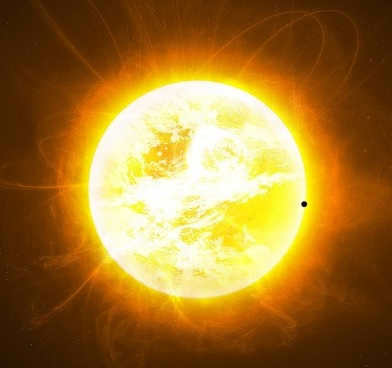
Planet’s Characteristics
Aside from its close proximity to the Sun, Mercury is also notable for its small size. It holds the title as the smallest planet out of all eight in our solar system, with a radius of just 2440km. To put that into perspective, it’s even smaller than the simple satellites of Saturn (Titan) and Jupiter (Ganymede). However, despite its small size, Mercury still possesses a mass of 3.3x1023kg and a density comparable to that of Earth, measuring at 5.43g/cm 3.
The sun provides abundant warmth to our planet. In comparison to Earth, Mercury receives approximately 7 million times more heat and light. Despite this, Mercury has a slow rotation, taking 176 Earth days to complete one full revolution on its axis. As a result, one side of the planet is always scorching hot (with temperatures reaching up to +430°C), while the other side remains in eternal darkness, experiencing extreme cold (-170°C).
Mercury is composed of a core, mantle, and crust. Scientists have discovered that the core of this planet, which is closest to the sun, contains a significant amount of iron, giving it a powerful magnetic field. This core accounts for approximately 75% of the planet’s total composition. Additionally, research has revealed that the crust of Mercury is no more than 300 km thick, and the mantle contains a substantial amount of silicates.
External Description of Mercury
Upon close observation of Mercury’s surface, striking similarities to the Moon can be observed. The majority of the surface is comprised of deserts, with scattered hills and craters, although not as deep as those found on Earth’s satellite. These features are believed to be the result of meteorite impacts on the planet’s surface, which are unaffected by Mercury’s thin atmosphere composed of hydrogen, carbon, carbon dioxide, oxygen, as well as argon and neon. Additionally, the planet’s surface is marked by long escarpments, reaching lengths of several hundred kilometers. Astrophysicists propose that these formations are a result of the celestial body contracting during its cooling process.
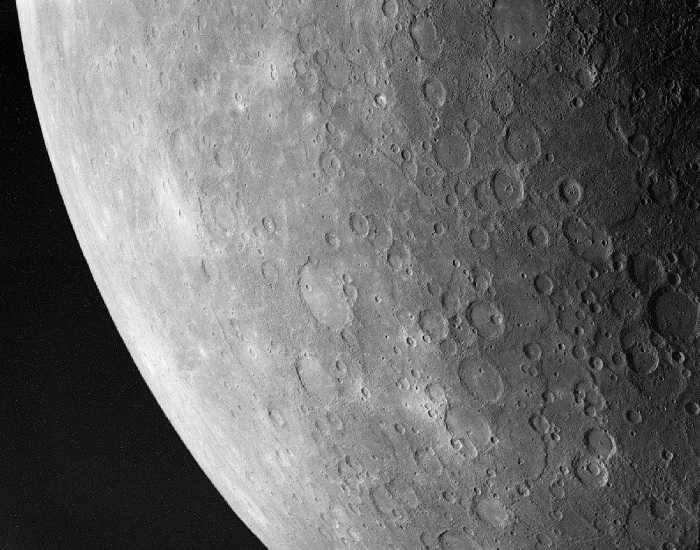
An attempt was made in 1974-1975 to explore Mercury using the Marinet-10 device. This device enabled the creation of a map covering around 45% of the planet’s surface.
The planet closest to the Sun is visible in the sky to the naked eye. However, it is best observed during sunset or before dawn. Without special equipment, it is not possible to see it at night.
Studying Mercury from our planet poses challenges due to its proximity to the Sun, making it difficult to observe. As a result, scientists have relied on radio telescopes and interplanetary probes to gather comprehensive data about this planet. One such probe, the Mariner-10 spacecraft, was utilized for the exploration of Mercury in 1974. It managed to approach the planet at a distance of 320km, providing valuable insights.
